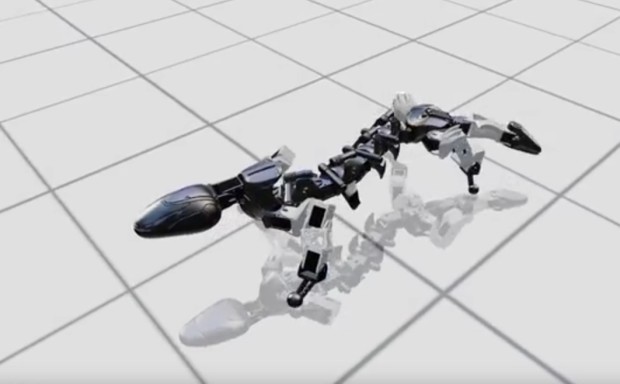
This video and white paper about a CAD program for creating a variety of 3D-printable robots, ready for on-screen gait testing and eventual printing, looks very impressive. The system was developed by Disney Research in partnership with Carnegie Mellon University.
The program allows you to experiment with various shapes, sizes, number of legs, types of walking gait, and more for desired robotic designs. The program has a very user-friendly interface and allows you to interact with the designs, refining them until you get a design and gait that you’re happy with. One can only imagine what a program like this might spawn in terms of innovative robotic designs. The research team writes:
We present an interactive design system that allows casual users to quickly create 3D-printable robotic creatures. Our approach automates the tedious parts of the design process while providing ample room for customization of morphology, proportions, gait, and motion style. The technical core of our framework is an efficient optimization-based solution that generates stable motions for legged robots of arbitrary designs. An intuitive set of editing tools allows the user to interactively explore the space of feasible designs and to study the relationship between morphological features and the resulting motions. Fabrication blueprints are generated automatically such that the robot designs can be manufactured using 3D-printing and off-the-shelf servo motors. We demonstrate the effectiveness of our solution by designing six robotic creatures with a variety of morphological features: two, four or five legs, point or area feet, actuated spines and different proportions. We validate the feasibility of the designs generated with our system through physics simulations and physically-fabricated prototypes.
What the video, white paper, and project site do not specify is how and when this program will be available, if it will be free or commercial, open source, etc. We’ll follow the progress of this project and report back.
You can download the white paper here [PDF] and access the project’s website here.
ADVERTISEMENT









